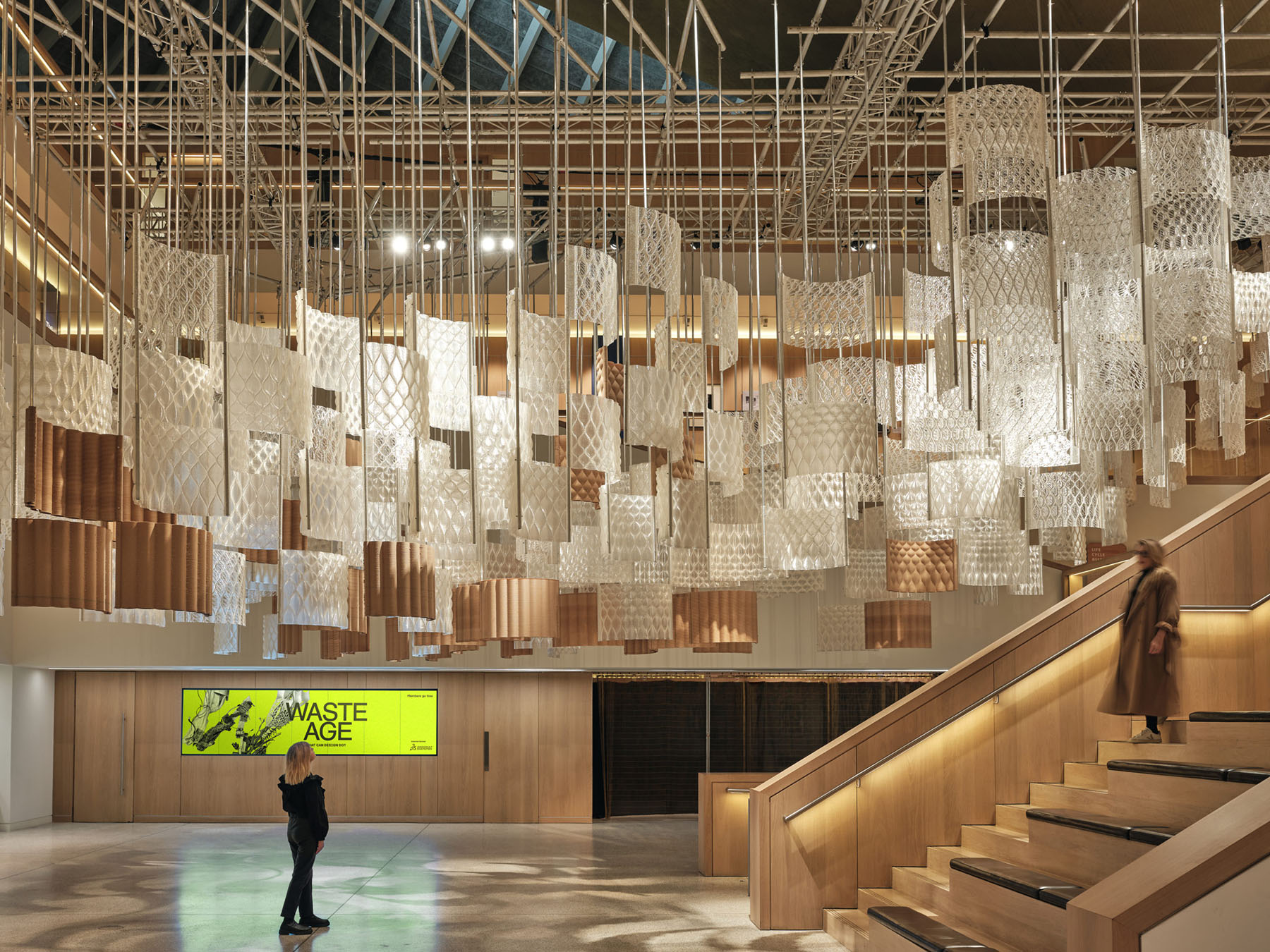
While up for Surface Design Show, we managed to slide through the doors just before The Design Museum closed its highly praised exhibition, Waste Age: What Can Design Do? And goodness was it well worth the trip.
The entrance square portal visually arrested the eye in both its citrus hue and stomach-churning facts. Pasted over the walls were 13 callosal reasons why we should take a long, hard look at our consuming and discarding habits. 141 million tonnes of plastic packaging being wasted by the industrial sector in 2015 alone. 11 kilos of textile waste being discarded every year. 87% of that ending up either in landfill or incinerators. And the global electric waste totalling more than 50 million metric tonnes in 2019 anticipated to increase by an estimated 20 million metric tonnes in the coming decade. Indeed, we are in a waste age.
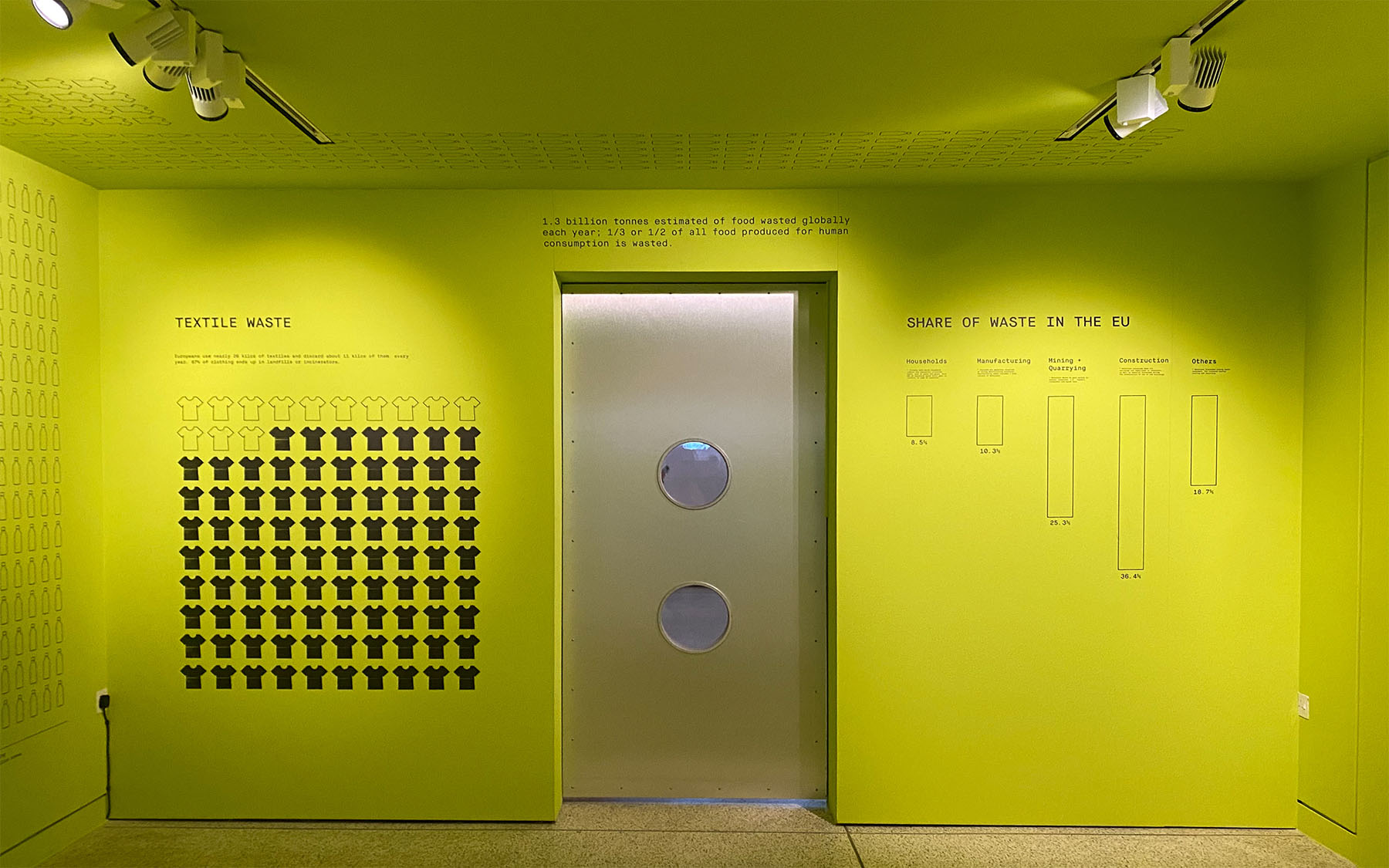
Thankfully, the door opened to the relief of lights and solutions, with a good dose of realism.
A little bit of History
Starting with the invention of the flushing toilet and employment of sewers; the population's sanitation and health increased, but consequently, the slogan "out of sight out of mind" was born. Fast forward to the 1st and 2nd World War cry of "make do and mend," when lack made every garden shed a repair shop, to the bounty of today and its unspoken mantra of "take, make and waste". Our association with ‘use’ has been a transformational journey.
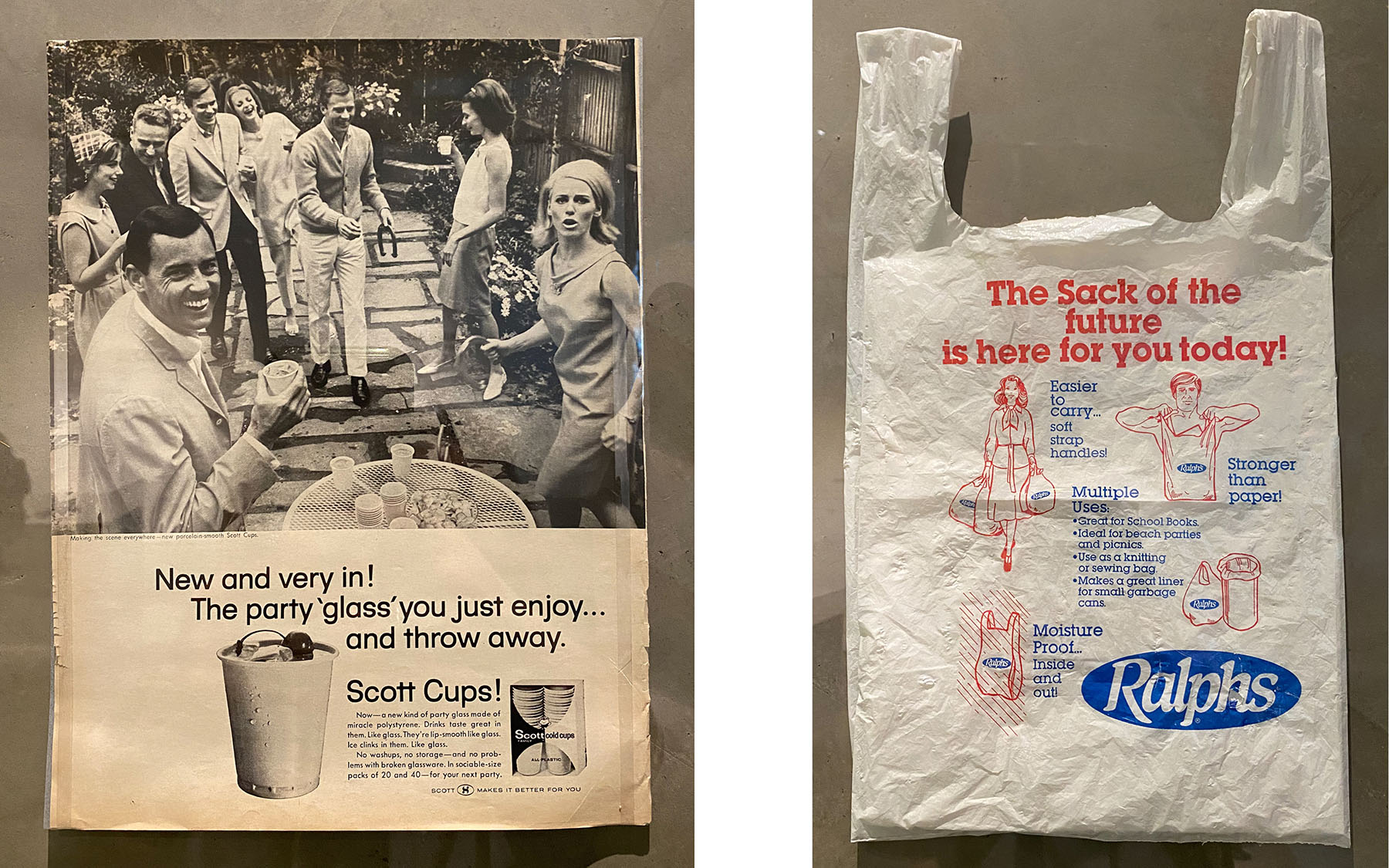
Illustrating this was an ironic display of 1980’s “glamour” items. Disposable cups that “will reduce housework” alongside the iconic 5p supermarket bag. “The sack of the future,” that is still here with us today. Some may think otherwise and that we have moved on, clocking their reusable hemp bag in their pocket, but: “160,000 plastic carrier bags are produced every second. And the lifetime use of the bag is averaged at 12 minutes.” If combined with a “workers’ lunch packaging, that amounts to 10.7 billion items of waste annually (276 per person).
The exhibition stated that we are yet to reach peak waste. With e-waste being the swiftest growing stream, “58 million tonnes globally and only 20% of it is officially recycled.”
Unsurprisingly the “Covid-19 pandemic led the record surge in plastic waste. From dispositive protective equipment to single-use plastic packaging – due to health and hygiene concerns. Each month, 194 billion disposable masks and gloves are used.”
Hope flowing through
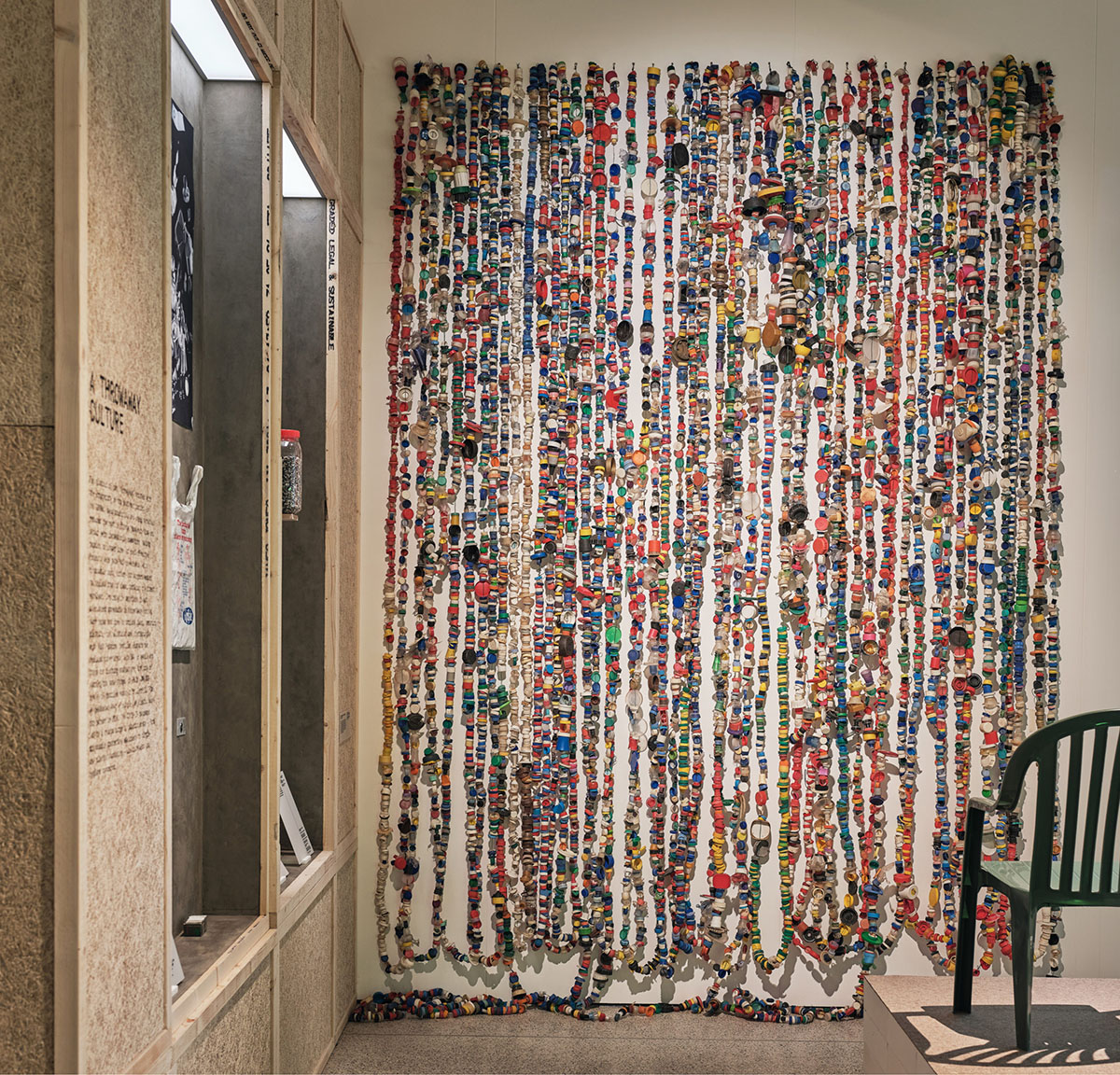
A plastic bottle top chain made from a winters' worth of collecting strikingly displays the stat: "The UK generated 44kg of single-use plastic waste per person (in 2019) to then only have 15% of that recycled". And that plastic bottles make up "25% of UK litter collected from our streets, parks and beaches." Something that we are all too aware of in our Ocean Plastic to Fantastic project.
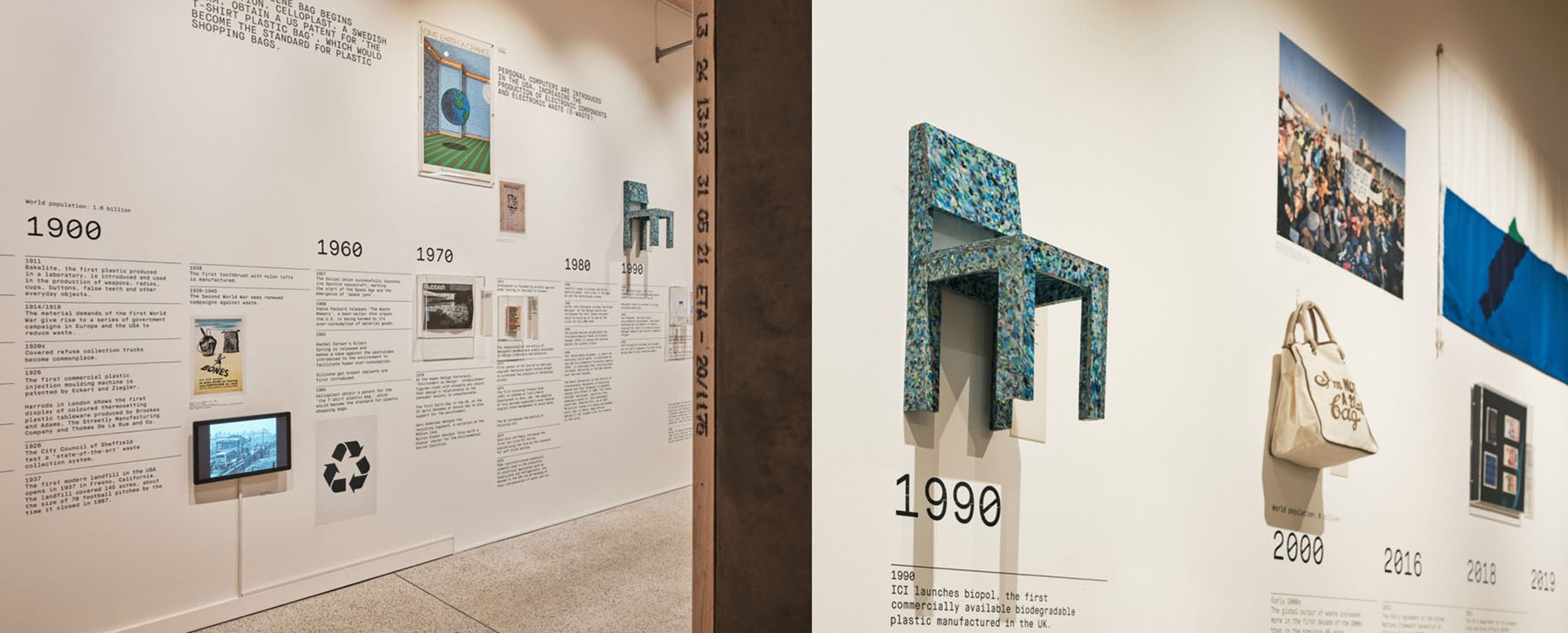
However, as we well know, there is hope on the timeline; avant garde recycling, designers adapting, redesigning, and making products from waste. We were pleased to see Smile Plastics feature here.
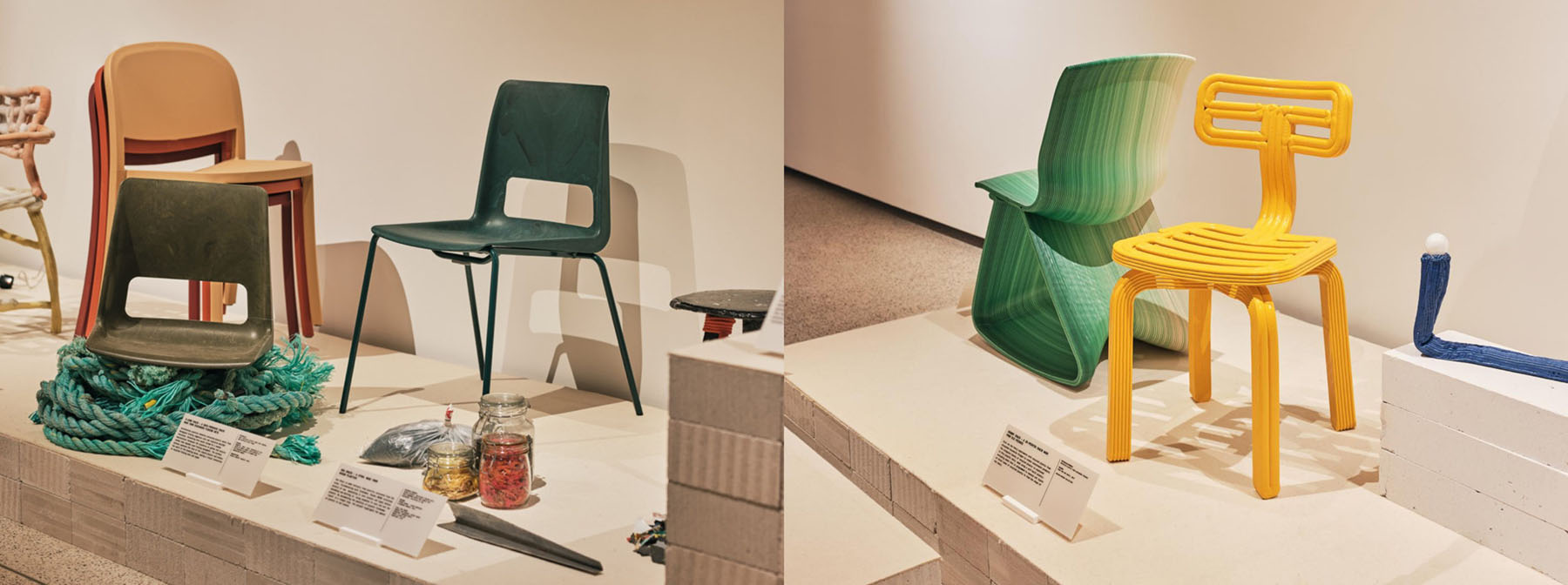
The exhibition continued with more innovative solutions around re-use, including ancient recipes to new technologies. Turning the tables on how we see products.
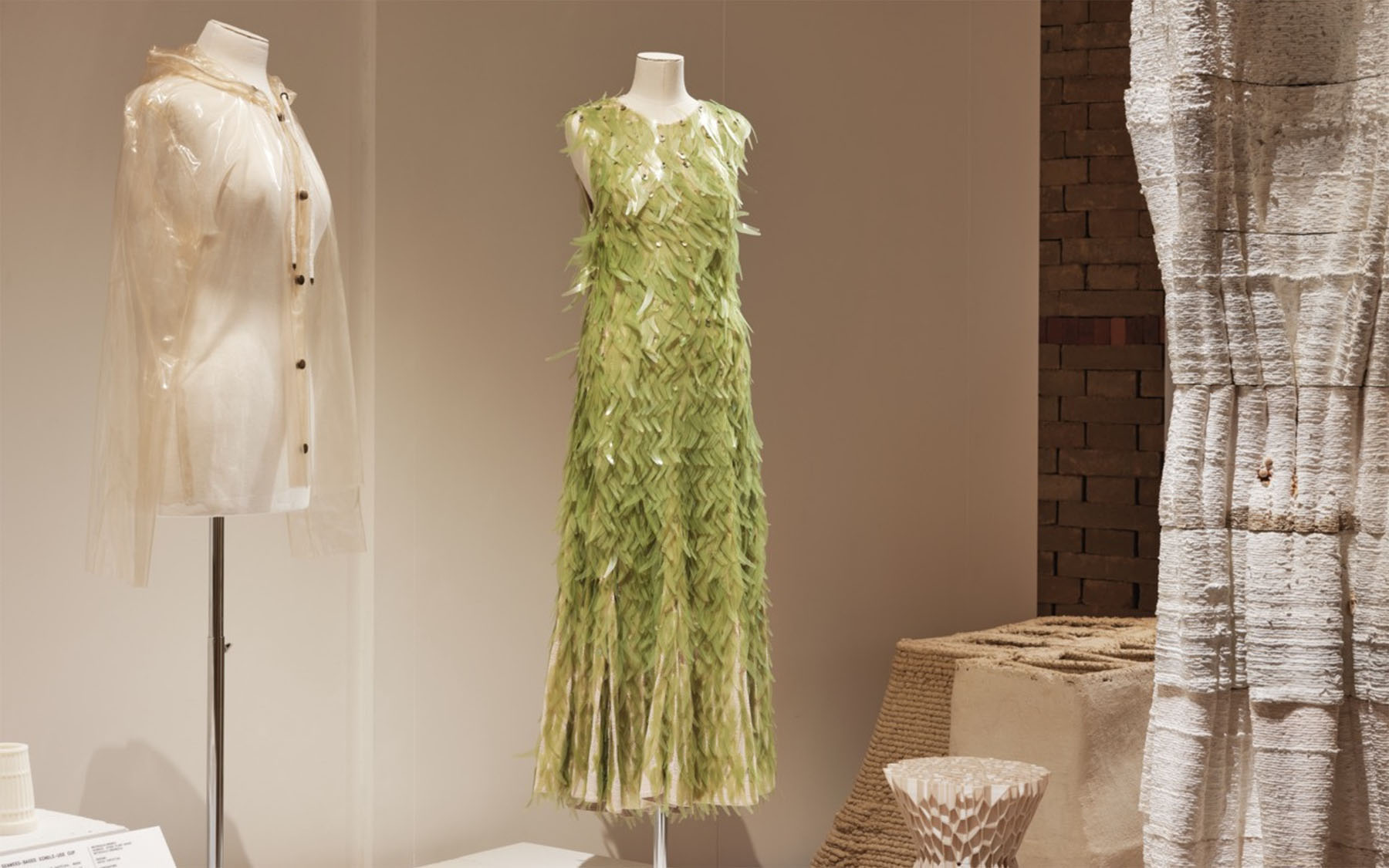
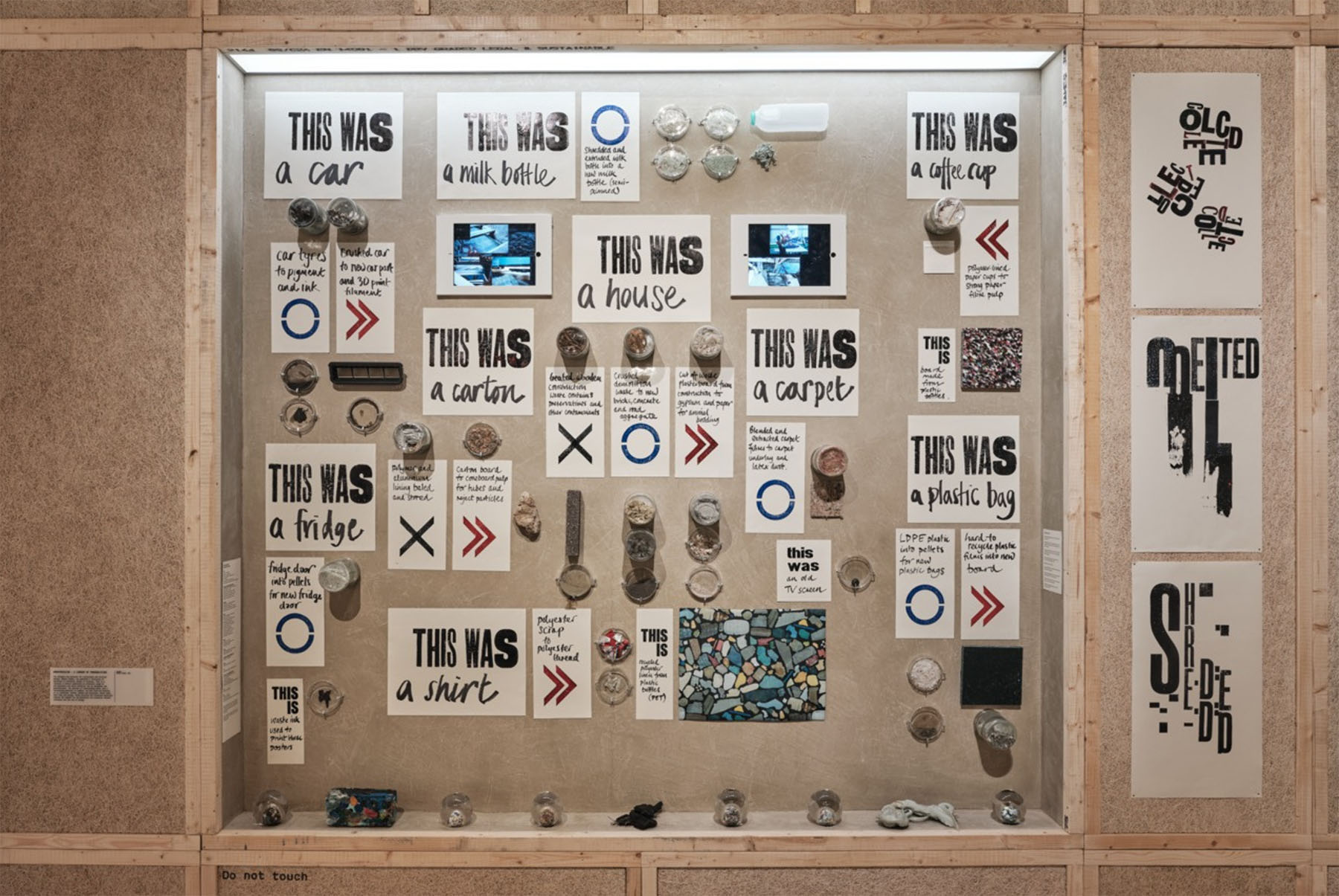
The mis castigation of waste
So if waste is growing in such abundance, and the best use of it is to keep it in circulation, should it actually be called waste?
"We need to change our mindset about waste… it's a mis categorisation". In nature, nothing is waste or wasted, "even rot can make fruit. Therefore, rot is not waste. It is only wasted if it is not used". Rather, "waste is a missed opportunity. It's a nonsense word and design default".
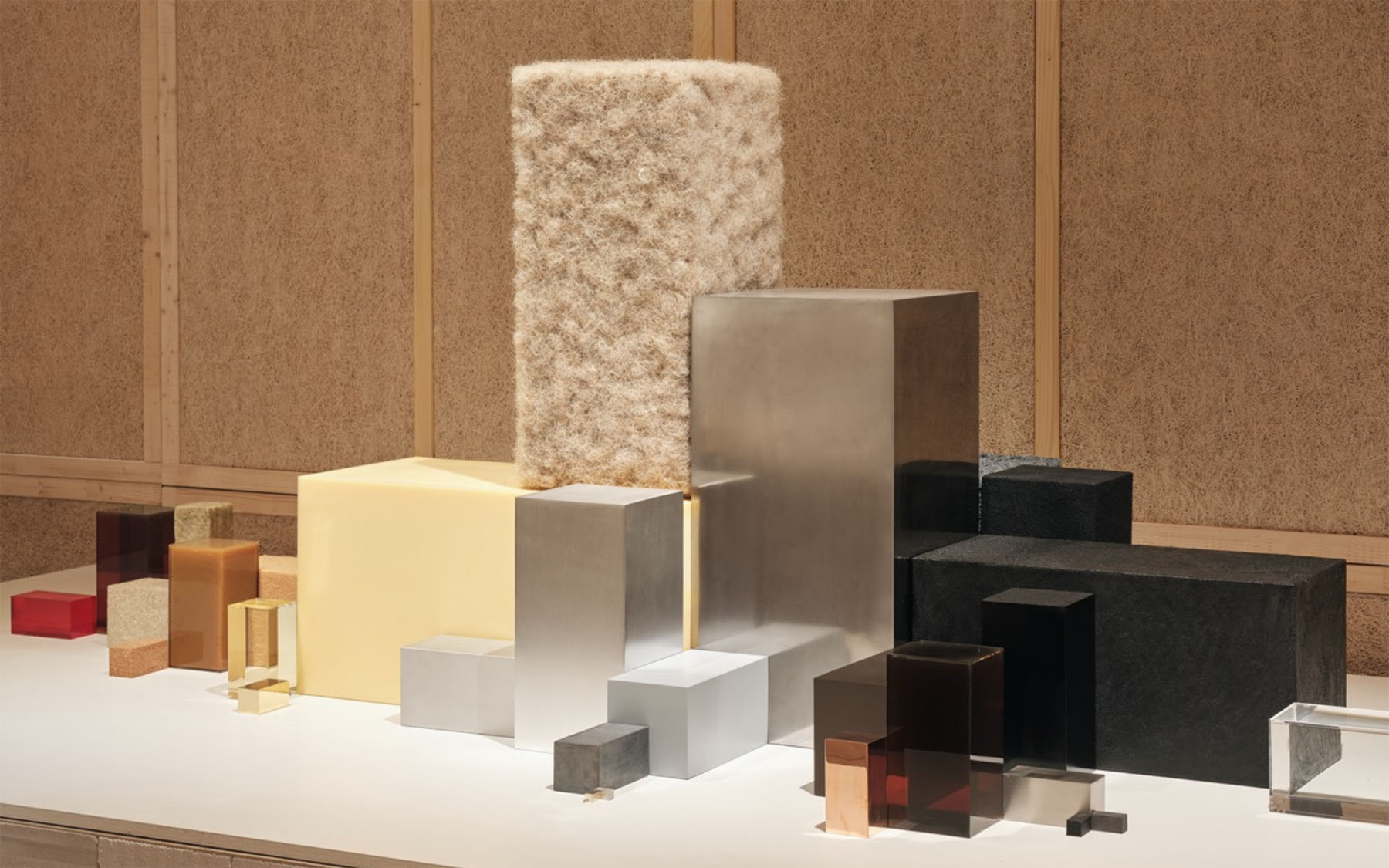
Studio Drift’s work responded directly to this. Making us rethink what the eye can see, in their display of a Volkswagen Beetle. They presented the product in its parts and not its final form. Taking our attention from the end product and how it benefits us and focusing on the materials’ singularly. Ingeniously re-establishing us with their properties, deficiencies and environmental impact.
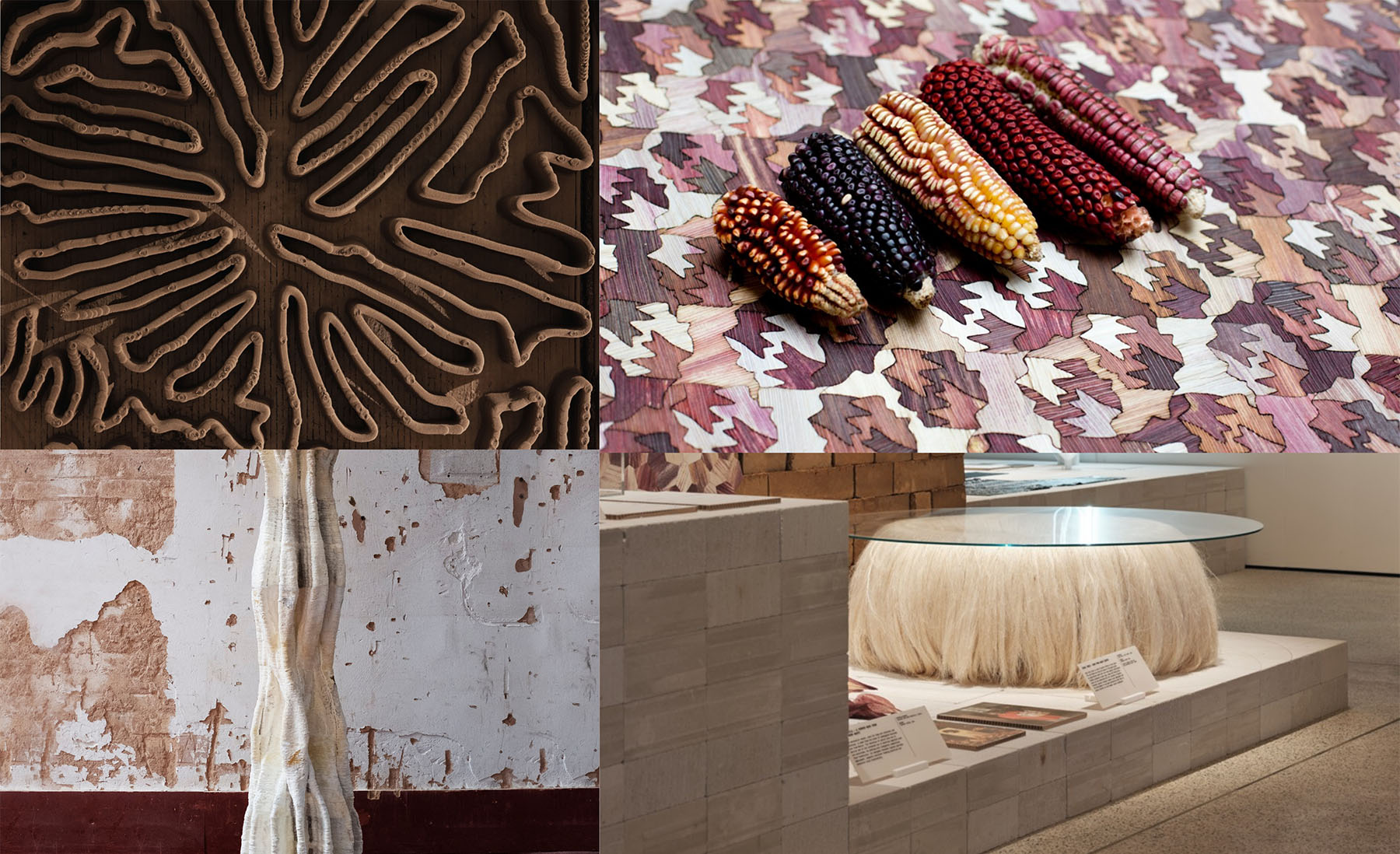
Opportunities were shown to be abound; from growing our future with plant-based alternatives cultivated from fungi, algae nuts and seeds, to using local waste and by-products. Synthetic, natural and bio materials were equally championed, signifying there is no single material solution to our waste age problem.
Growing back to ancient wisdoms
Naturally, the moral of the exhibition’s story is the importance of designers to make durable, repairable and recyclable products. To create products that we invest in, value, and want to maintain; emphasising the need for the product's ability to be repaired and evolve with time as a bonus. Products also need to be easily dissembled and repurposed for their afterlife. The whole life cycle designed and bought into.
The hope? That we will look back at single-use products in the same vein as we think of the Victorians using lead.